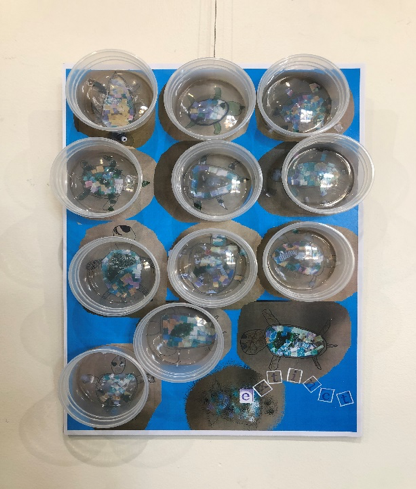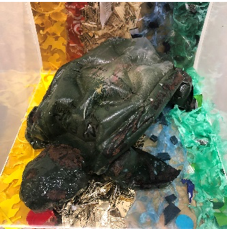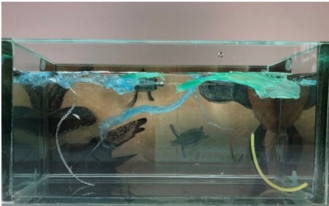2018 YACHTS (Young Achievers Actively Honing Thinking Skills) Update
2018 YACHTS (Young Achievers Actively Honing Thinking Skills) Update
In Term 4 2018, selected students participated in a STEAM – Literacy Project titled, ‘The Hatchery Crusade’. In Stage 1 of the project, students explored structural and behavioural adaptations of loggerhead turtles and how these assisted turtles to survive. They also focused on the feeding and nesting habitats of the loggerhead turtle, as well as creating food chains and food webs. Students investigated why loggerhead turtles are listed as an endangered species and explored some of the things that we can do to protect the future of the loggerhead turtle.
Stage 2 of the project saw students inquire into ‘The Marine Plastic Problem’. Students delved into how plastics get into our oceans and what we can do as both individuals and a community to reduce plastic pollution. They identified organisations and community groups that are already addressing the plastic problem and raising public awareness in this area. Students researched the difference between macroplastics, microplastics, microbeads and nanoplastics and how they can be harmful to our marine life.
In Stage 3, students completed culminating pieces. Each year level designed and built an art piece, using recycled plastic as a component and entered their culminating pieces into the World Science Festival, which is being held in Brisbane from 20-24 March 2019. We have just been notified that our Year 4 YACHTS entry, Plastic Tomb, has made the finals and the students have been invited to attend a special finalist ceremony in March at the Queensland Museum.
Congratulations not only to these entrants, but to all students who’ve completed this rich project. Please see below photographs of each piece, along with the artist statements for each.
Year 3, 2018
 Our collage, ‘Life Through a Lens’, depicts a flotilla of loggerhead turtles who are dying because of the plastic pollution within our oceans. Each turtle was constructed using collaged recycled plastic that we collected from local beaches and waterways to demonstrate the plight of the loggerhead turtle. Each individual turtle is viewed through its own plastic lens, which is trapping the turtle beneath and squeezing the life from each one. Our world is a plastic driven world and we use plastic for everything. We pay with it, play with it, clean, eat and write with it. We drive in it, click with it, measure, type and celebrate with it. But at what cost? One garbage truck of plastic enters our oceans every minute and is destroying the entire marine environment. Thus, the plastic lens is the controller, holding down each turtle, until eventually the turtles die and become extinct. This replicates what is currently happening in our global marine environment and offers a future glimpse of life without loggerheads. Is this the lens we want to keep for our future?
Our collage, ‘Life Through a Lens’, depicts a flotilla of loggerhead turtles who are dying because of the plastic pollution within our oceans. Each turtle was constructed using collaged recycled plastic that we collected from local beaches and waterways to demonstrate the plight of the loggerhead turtle. Each individual turtle is viewed through its own plastic lens, which is trapping the turtle beneath and squeezing the life from each one. Our world is a plastic driven world and we use plastic for everything. We pay with it, play with it, clean, eat and write with it. We drive in it, click with it, measure, type and celebrate with it. But at what cost? One garbage truck of plastic enters our oceans every minute and is destroying the entire marine environment. Thus, the plastic lens is the controller, holding down each turtle, until eventually the turtles die and become extinct. This replicates what is currently happening in our global marine environment and offers a future glimpse of life without loggerheads. Is this the lens we want to keep for our future?
Year 4, 2018
 Our sculpture, ‘Plastic Tomb’, displays a turtle made from recycled plastic. Within his stomach sits bits of plastic that he has eaten, perhaps mistaking them for jellyfish. This has led to his death and we can see his body rotting, as represented with iron filing paint and rust treatment upon certain sections. His final plastic curse, the plastic container he is encased within, marks his tomb.
Our sculpture, ‘Plastic Tomb’, displays a turtle made from recycled plastic. Within his stomach sits bits of plastic that he has eaten, perhaps mistaking them for jellyfish. This has led to his death and we can see his body rotting, as represented with iron filing paint and rust treatment upon certain sections. His final plastic curse, the plastic container he is encased within, marks his tomb.
Our ocean floor features a collection of found plastic objects, inspired by environmental artist, John Dahlson. The design represents our own East Australian Current which brings the warm waters of the Coral Sea southwards to mix with the cool temperate waters of the Tasman Sea. We’ve represented the warm Coral Sea in warm colours of gold, red and yellow, whilst we’ve added in the blue and green cool colours to represent the cooler Tasman Sea. Our loggerhead turtle has met his fate in the East Australian Current, which is not only transporting marine life, but also unwanted and dangerous plastic within it, represented by our use of recycled plastic pieces to represent the huge amount of macroplastics, microplastics, nanoplastics and microbeads within our marine environment.
Year 5, 2018
 Our sculpture and photograph, ‘Homecoming’, depicts a bale of loggerhead turtles returning home to waters off the coast near Caloundra. Visible within the print are not only the turtles, but bits of macroplastic floating within the ocean. These bits of plastic were collected by us at local beaches and waterways on the Sunshine Coast, where art imitated life, as we imitated conservation groups and scientists who collect plastic debris from oceans for research and preservation of animals and environments. The turtles are struggling to swim through the plastic, which is constricting them and tricking them.
Our sculpture and photograph, ‘Homecoming’, depicts a bale of loggerhead turtles returning home to waters off the coast near Caloundra. Visible within the print are not only the turtles, but bits of macroplastic floating within the ocean. These bits of plastic were collected by us at local beaches and waterways on the Sunshine Coast, where art imitated life, as we imitated conservation groups and scientists who collect plastic debris from oceans for research and preservation of animals and environments. The turtles are struggling to swim through the plastic, which is constricting them and tricking them.
Mrs Christine Doyle, Head of Teaching & Learning (3-5) and Yachts Coordinator (3-5)
